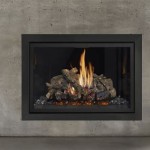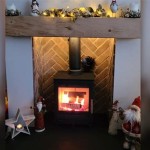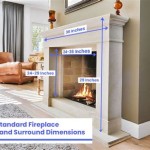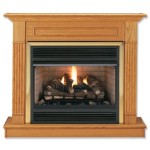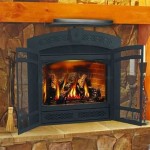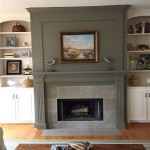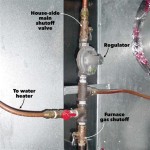```html
Understanding Thermocouple Gas Fireplaces
Gas fireplaces offer a convenient alternative to traditional wood-burning fireplaces, providing warmth and ambiance with the simple flick of a switch. At the heart of many gas fireplace systems lies a crucial safety component: the thermocouple. This article details the function, operation, troubleshooting, and importance of the thermocouple in gas fireplace systems.
What is a Thermocouple?
A thermocouple is a thermoelectric device used to measure temperature. It consists of two dissimilar metal wires joined at one end, creating a junction. This junction, referred to as the "hot junction" or "sensing junction," is exposed to the heat source. The opposite end of the wires, the "cold junction" or "reference junction," is connected to a measuring instrument. When the hot junction is heated, a voltage is generated due to the Seebeck effect. This voltage is directly proportional to the temperature difference between the hot and cold junctions.
In the context of a gas fireplace, the thermocouple is used as a safety device to ensure that the pilot light remains lit. If the pilot light extinguishes, the thermocouple cools down, the voltage drops, and the gas supply is automatically shut off, preventing the accumulation of unburnt gas within the fireplace and potentially averting a dangerous situation.
How a Thermocouple Works in a Gas Fireplace
The operation of a thermocouple within a gas fireplace system is a multi-stage process:
- Pilot Light Ignition: When the gas fireplace is initially started, the pilot light is manually ignited. This small flame heats the hot junction of the thermocouple.
- Voltage Generation: As the hot junction heats up, the thermocouple generates a small DC voltage, typically in the millivolt range. The specific voltage output varies depending on the metals used in the thermocouple and the temperature of the pilot flame.
- Valve Activation: The generated voltage travels through the thermocouple wires to the gas control valve. This valve is often a millivolt valve, meaning it is designed to operate with the low voltage produced by the thermocouple. The voltage energizes a small electromagnet within the valve.
- Gas Flow Maintenance: The energized electromagnet holds the gas valve open, allowing gas to flow continuously to the pilot light and, when the fireplace is activated, to the main burner.
- Pilot Light Extinguishment and Safety Shut-Off: If the pilot light is extinguished due to a draft, gas supply interruption, or any other reason, the thermocouple cools down. As the temperature of the hot junction decreases, the voltage output drops. When the voltage drops below a certain threshold, the electromagnet in the gas control valve de-energizes. This causes the valve to close, shutting off the gas supply to both the pilot light and the main burner. This prevents the release of unburnt gas into the environment.
This entire cycle ensures that gas flows only when the pilot light is actively burning, providing a critical safety mechanism. The sensitivity and reliability of the thermocouple are paramount for the safe operation of the gas fireplace.
Troubleshooting Thermocouple Issues
A malfunctioning thermocouple is a common reason for a gas fireplace to fail to operate correctly. Several factors can contribute to thermocouple failure, and identifying the specific cause is crucial for effective troubleshooting.
1. Pilot Light Won't Stay Lit: This is the most common symptom of a faulty thermocouple. If the pilot light ignites but extinguishes as soon as the control knob is released, the thermocouple is likely not generating sufficient voltage to keep the gas valve open. Potential causes include:
- Dirty Thermocouple: Soot, carbon deposits, or oxidation on the thermocouple can impede heat transfer and reduce voltage output. Cleaning the thermocouple with fine-grit sandpaper or steel wool can sometimes restore its functionality. Ensure the gas supply is completely shut off before cleaning.
- Bent or Damaged Thermocouple: Physical damage to the thermocouple, such as a bend, kink, or break in the wires, can interrupt the flow of electricity. In such cases, replacement is necessary.
- Loose Connections: Check the connections at both ends of the thermocouple wires, where they connect to the gas control valve and the thermocouple itself. Loose or corroded connections can impede the flow of voltage. Tighten or clean the connections as needed.
- Weak Pilot Flame: If the pilot flame is too small or not properly positioned to heat the thermocouple sufficiently, the voltage output will be inadequate. Adjust the pilot flame according to the manufacturer's instructions. Ensure the pilot light orifice is clean and free of obstructions.
- Faulty Gas Control Valve: While less common, a malfunctioning gas control valve can also prevent the thermocouple from working correctly. If the valve is not receiving and responding to the thermocouple's voltage, it may need to be repaired or replaced. Testing the valve with a multimeter can help determine its functionality.
- Faulty Thermocouple: The thermocouple itself may have reached the end of its lifespan. Thermocouples gradually degrade over time due to constant heating and cooling cycles. Testing the thermocouple’s output voltage with a multimeter is the most reliable way to determine if it is working correctly.
2. Testing a Thermocouple with a Multimeter: A multimeter can be used to measure the DC voltage output of the thermocouple. To perform this test:
- Turn the gas supply off.
- Disconnect the thermocouple wires from the gas control valve.
- Set the multimeter to measure DC millivolts (mV).
- Connect the multimeter leads to the thermocouple wires. Ensure proper polarity; usually, the red lead connects to the positive wire and the black lead to the negative wire.
- Light the pilot light.
- Observe the voltage reading on the multimeter. A healthy thermocouple should typically produce a voltage reading of at least 20-30 mV when heated by the pilot flame. Refer to the manufacturer's specifications for the exact voltage range.
- If the voltage reading is significantly lower than the specified range, the thermocouple is likely faulty and needs to be replaced.
3. Replacement Procedures: Replacing a thermocouple is a relatively straightforward process, but it requires careful attention to safety and adherence to the manufacturer's instructions.
- Shut Off the Gas: Before starting any repair work, completely shut off the gas supply to the fireplace and pilot light.
- Locate the Thermocouple: Identify the location of the thermocouple. It is typically located near the pilot light assembly.
- Disconnect the Old Thermocouple: Disconnect the thermocouple wires from the gas control valve and carefully remove the thermocouple from its mounting bracket.
- Install the New Thermocouple: Install the new thermocouple in the same location and orientation as the old one. Tighten the connections securely, but avoid over-tightening, which could damage the thermocouple.
- Reconnect the Wires: Reconnect the thermocouple wires to the gas control valve, ensuring proper polarity.
- Test the Fireplace: After replacing the thermocouple, turn the gas supply back on and test the fireplace to ensure that the pilot light stays lit and the main burner functions properly.
It is always recommended to consult the manufacturer's instructions for specific guidance on thermocouple replacement for the particular gas fireplace model.
Importance of Proper Thermocouple Function
The thermocouple plays a critical role in ensuring the safe and reliable operation of a gas fireplace. Its primary function is to act as a safety interlock, preventing the release of unburnt gas in the event of pilot light failure. A properly functioning thermocouple ensures that:
- Gas Leaks are Prevented: The thermocouple's shut-off mechanism prevents the accumulation of unburnt gas within the fireplace and surrounding area, mitigating the risk of gas leaks and potential explosions.
- Carbon Monoxide Poisoning is Minimized: Unburnt gas can release carbon monoxide, a colorless and odorless gas that is highly toxic. A functioning thermocouple helps prevent carbon monoxide poisoning by shutting off the gas supply when the pilot light is extinguished.
- The Fireplace Operates Safely: By ensuring that gas flows only when the pilot light is lit, the thermocouple contributes to the overall safe operation of the gas fireplace, minimizing the risk of malfunctions and hazards.
Regular inspection and maintenance of the thermocouple are essential for maintaining its functionality and ensuring the safety of the gas fireplace. It is recommended to have the gas fireplace professionally inspected and serviced annually to identify and address any potential issues with the thermocouple or other components.
In conclusion, the thermocouple is an indispensable safety device in a gas fireplace system. Understanding its function, troubleshooting potential issues, and performing regular maintenance are crucial for ensuring the safe and reliable operation of the fireplace. Ignoring thermocouple problems can lead to serious safety hazards. When in doubt, always consult a qualified gas fireplace technician for assistance.
```
Gas Fireplace Won T Stay Lit Magic Touch Mechanical

Thermo Thermopiles Friendly Fires

Identifying Gas Fireplace Parts Www Mygasfireplacerepair Com

Gas Fireplace Won T Stay Lit Magic Touch Mechanical

Thermo Thermopiles Friendly Fires

Gas Fireplace Pilot Lights Your Complete Guide Universe

Pse Pilot Assembly With Eco Thermocouple Natural Gas Fire Parts Ca

Gas Fireplace Missing Thermopile

Fireplace Won T Stay Lit This Is How You Fix It

Diy Gas Fireplace Repair No Flame Problem Remodeling Cost Calculator

